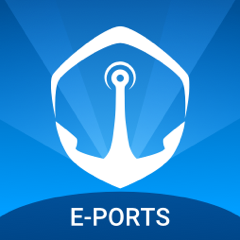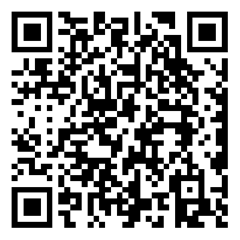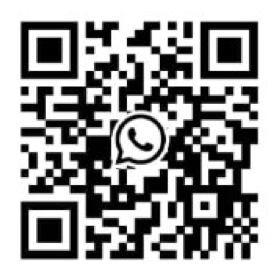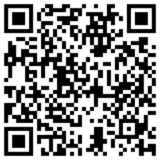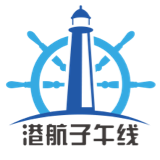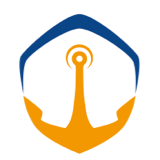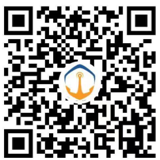Guidance on the Prevention and Control of New Coronary Pneumonia Epidemic in Ports and Their Frontli
Notice of the Ministry of Transport on Printing and Distributing the "Guidelines on the Prevention and Control of New Coronary Pneumonia Epidemic Situation in Ports and Their Front-line Staff (Second Edition)
The transportation departments (bureaus and commissions) of the provinces, autonomous regions, and municipalities directly under the Central Government, the Yangtze River Navigation Administration, the Pearl River Navigation Administration, and the maritime administrations directly under each:
In order to implement the spirit of the Central Leading Group Meeting on New Coronary Pneumonia Epidemic Work and the “Guiding Opinions of the State Council’s Joint Prevention and Control Mechanism on New Coronavirus Infection and Pneumonia Outbreaks to Do Normalized Prevention and Control of New Coronary Pneumonia Outbreaks” (National Invention [2020] 14 No.) spirit, in accordance with the requirements of “foreign defense importation, internal defense rebound”, we must be cautious as always, pay close attention to the prevention and control of foreign epidemic situation importation, and at the same time, aim at the restoration of domestic production and living order, stage dynamic adjustment and precise optimization The prevention and control measures further strengthened the guidance of epidemic prevention and control work. The Ministry revised and formed the "Guidelines for the Prevention and Control of New Coronary Pneumonia Epidemic Situation in Ports and Their Frontline Personnel (Second Edition)", which is now issued to you. All units should promptly feedback if they have any relevant suggestions during the implementation process.
transportation Department
June 12, 2020
Guidance on the Prevention and Control of New Coronary Pneumonia Epidemic in Ports and Their Frontline Staff (Second Edition)
In order to thoroughly implement the decision-making and deployment of the Party Central Committee and the State Council, in accordance with the requirements of "foreign defense import, internal defense rebound", we must pay close attention to the import prevention and control of foreign epidemic situation, strengthen the self-protection of port employees, especially front-line workers, and strictly This guideline was developed to prevent the spread of new coronary pneumonia epidemics through waterways.
One,Scope of application
This guideline is applicable to the prevention and control of epidemic situations during the piloting, berthing and loading and unloading operations of ships during the new coronary pneumonia epidemic, as well as the management and protection of pilots, dock loading and unloading personnel and other boarding operators.
two,General requirements
According to the development and changes of the epidemic situation, the relevant units of the port, in accordance with the deployment requirements of legal, accurate and effective prevention and control of overseas epidemic input, under the unified leadership of the local government, implement precise policies and careful deployment to coordinate the epidemic prevention and control, port production, Occupational health and other work. Seriously implement the main responsibility of the enterprise, port enterprises and pilotage institutions establish an epidemic prevention and control work system, care for the health of frontline staff, determine the risk level of pilotage and port operations, and strengthen information sharing and materials based on the status of incoming ships at the port and crew status. Reserves, ship-shore isolation, access control, ventilation and disinfection, personal protection, emergency treatment, etc., resolutely guard against the risk of epidemic input at water transport ports.
three,Strengthen information management and reporting
(1) Keep abreast of the information of incoming ships and crew.
Port enterprises and pilot agencies should strengthen the sharing of information with ship agencies and customs, border inspection, maritime and other units, and formulate relevant work plans based on the following ship and crew information.
1. Information about the ship's call to port, departure dynamics, etc.
2. Information about the crew's basic conditions, physical health, etc. During the ship's berthing, the crew's shifts, personnel disembarkation, material delivery, and personnel contact information.
3. Information such as ship quarantine and ship epidemic prevention measures.
4. Information about close contacts during ship berthing.
5. Operation information of domestic sewage and ballast water treatment devices.
(2) Strengthen personnel and vehicle information management.
Port enterprises register and check personnel and vehicles entering and leaving the port, strengthen information collection, and implement closed-loop management. When opening the wharf to the outside world, Chinese nationals can pass with the health code and green code, and the disembarking crew and overseas personnel should pass the relevant national regulations.
(3) Strengthen information submission.
According to relevant requirements, report the epidemic prevention and control information to the local transportation (port) management department.
four,Standard and strict operating procedures
1. Pilotage agencies and port enterprises organize pre-ship meetings before the ship enters the port to study and judge the risk of ship epidemic prevention and control, arrange the operators according to the principle of being as concise as possible, clarify the specific protective measures and precautions of the relevant operators, and implement the responsible person .
2. The port enterprise urges the ship to do sterilization, ventilation and other related work through the ship agency and other units, arrange personnel on duty during the port, accurately record the identity information of the boarding and disembarking personnel, the reasons for getting on and off the ship, and contact information, etc., to ensure that the information can be traced.
3. Ships on international voyages have passed the customs sanitation and quarantine, and the relevant records show that the crew is safe and safe to carry out loading and unloading operations when they are healthy. Among them, ships intended to be converted from international routes to domestic routes must wait for the crew to pass the nucleic acid test before carrying out loading and unloading operations at the port of entry.
4. Strictly implement prevention and control measures such as non-direct contact between ship and shore personnel, earnestly implement the port facility security plan for opening to the outside world, strengthen the management of entry and exit personnel, vehicles and ship port interface, strengthen the management of boarding and disembarking channels, and strictly control the ships of international navigation Crew exchange activities are not allowed to go ashore except for production and life and emergency situations.
5. When meeting the requirements of epidemic prevention and control, and with the permission of the port inspection unit, when carrying out activities such as crew shifts, ship supply, ship inspection, and emergency rescue and disposal of injured and sick seafarers, port enterprises shall cooperate with relevant units to manage the entry and exit of personnel, and disembarkation and embarkation of relevant personnel. . Personnel and vehicles entering and leaving the port should be notified in advance by the shipping agency and other relevant units, and strictly perform the temperature measurement of the relevant personnel before entering the port. Persons whose body temperature exceeds 37.3°C are prohibited from entering the port, and report to the local health management department according to the procedures.
Fives,Protection requirements for workers
(1) Protection requirements for terminal operators.
1. Equipped with temperature detection equipment at the entrance of the workplace and work area. According to the job risk level of different positions, equip the workers with necessary protective equipment such as masks, gloves, goggles, and guide the correct use.
2. Do a good job of body temperature detection of workers. Personnel who may have close contact with the crew should be relatively fixed and implement record management.
3. No special circumstances, the terminal operator does not board the ship, and does not directly contact the crew. If you must be in close contact with the crew due to work needs, try to choose an outdoor space for personal protection and maintain a safe distance of more than 1 meter.
4. In the course of loading and unloading operations, take appropriate isolation measures such as notice boards, warning lines, etc. In principle, crew members are prohibited from entering the wharf operation area. When cooperation between the ship and the shore is required, the crew should be required to wear personal protective equipment such as masks and gloves correctly, and take measures such as taking turns or increasing the interval between operations to avoid direct contact between the terminal personnel and the crew. For crew members who really need to go ashore, a body temperature test shall be carried out.
5. Try to use telephone, WeChat, online video and other methods to communicate and deploy, to reduce the concentration of operators.
(2) Pilot protection requirements.
1. Pilotage agencies strengthen the reserve and supply of epidemic prevention materials, increase the provision of medical protective masks, gloves, goggles, protective clothing, infrared thermometers and disinfectants, and establish a supply system for epidemic prevention materials. Strengthen pilot health monitoring and establish a daily health reporting system.
2. Pilots, pick-up vehicles, and pilot boats are relatively fixed, implement record management, strengthen body temperature monitoring, and regularly organize nucleic acid testing of pilots in accordance with local requirements.
3. During the piloting of the ship, the pilot should wear protective clothing, goggles, masks, gloves and other personal protective equipment correctly throughout the journey.
4. When boarding and leaving the ship, outdoor channels should be selected as far as possible to avoid crew living areas.
5. During pilotage, the ship shall be notified to control the number of bridges, strengthen bridge ventilation, reduce contact with crew, and maintain a safe distance. If possible, special intercoms and other communication equipment should be used to avoid cross-use of communication equipment with the crew.
6. Pilots should try to avoid eating and going to the toilet on board.
7. Pilots must take disinfection measures in accordance with the regulations after disembarking from the ship, and waste products such as disposable protective equipment should be disposed of in accordance with the regulations.
8. The driver who picks up the pilot and the crew of the traffic boat should wear personal protective equipment such as masks and gloves correctly, and regularly check the body temperature.
(3) Protection requirements for other boarding personnel.
1. Boarding personnel should wear masks, gloves, goggles and other personal protective equipment, and do a good job in temperature detection and information registration.
2. Boarding personnel are prohibited from entering the crew's living area and reducing contact with the crew. If you really need to be in close contact with the crew, you should try to choose an outdoor space and maintain a safe distance of more than 1 meter.
3. Boarding personnel try to avoid eating, going to the toilet and resting on the boat. After the relevant work is completed, disembark as soon as possible.
4. After disembarking, the boarding personnel shall take disinfection measures in accordance with the regulations, and the waste products such as disposable protective equipment shall be disposed of in accordance with the regulations.
six,Strengthen environmental sanitation protection
Strengthen the provision of protective and control materials, anti-killing supplies, equipment and other prevention and control materials, give priority to the protection of protective equipment, and give priority to the input of manpower. In accordance with the protection standards of high-risk areas, the procurement, configuration and use of epidemic protection equipment for front-line workers shall be well done, so that reserves, distribution and use shall be in place. Epidemic prevention materials include, but are not limited to: ordinary masks, medical high-grade protective masks, protective clothing, protective glasses or protective masks, disinfectant (containing chlorine disinfectant 250mg/L~500mg/L or 75% alcohol concentration) , The two must not be mixed and mixed), disinfecting hand sanitizer, disinfecting paper towels, disposable gloves, rubber gloves, thermometers, infrared thermometers, emergency vehicles, emergency drugs, etc.
(1) Ventilation and environmental hygiene requirements.
1. Strengthen environmental ventilation. Reception hall, waiting room, canteen, meeting room, office area and other space areas are equipped with alcohol, disposable hand sanitizer and other supplies, and regular windows are opened for ventilation to maintain indoor air circulation. The frequency of ventilation is not less than 3 times a day. Less than 30 minutes.
2. Use the air conditioner correctly. Natural ventilation is preferred. If air-conditioning is used, the air supply of the air-conditioning system should be safe, sufficient fresh air input should be ensured, and all exhaust air should be discharged directly to the outside. When the air conditioner is not used, the return air channel should be closed.
3. Keep the environment clean and hygienic. Clean the transport garbage in time.
(2) Cleaning and disinfection control.
1. Vehicles and boats that transport employees should be disinfected each time.
2. Spray or wipe the surfaces of objects that are frequently in contact (reception windows, elevator buttons, handrails, door handles, etc.) with chlorine-containing disinfectants containing 250 mg/L to 500 mg/L of available chlorine, or disinfectant wipes Wipe.
3. Staff gathering area (reception hall, waiting room, canteen, meeting room, office area, toilet, collective dormitory, etc.) should be cleaned and disinfected no less than twice a day, and disinfection should be avoided as far as possible. Spray with chlorine-containing disinfectant (using 84 disinfectant at a ratio of not less than 1:50), spraying chlorine-containing disinfectant to ensure that it is not less than 20-30mL per cubic meter, or use alcohol with a concentration of not less than 75% Disinfect the equipment and wipe the area where many people touch. Do not mix chlorine-containing disinfectant and alcohol-based disinfectant.
4. During the spraying of disinfectant, the spray area should be relatively closed to achieve the disinfection effect. After spraying the disinfectant for 20 minutes, arrange personnel to open the window to ventilate. At least 10 minutes, the space area will resume normal use.
5. Strengthen the cleaning of garbage containers such as garbage cans and disinfect them regularly. It can be sprayed or wiped with chlorine disinfectant containing 250mg/L~500mg/L of available chlorine, or wiped with disinfectant wipes.
(3) Hygienic protection requirements.
1. Set one or two non-contact temperature detection points at the entrance channel to minimize entrances or exits or maintain one-way access. The inspection staff should keep a distance of more than 1 meter from the inspected object, wear work clothes, protective masks, disposable gloves or rubber gloves, and wear protective glasses or protective screens if possible.
2. Personnel of labor service units, visitors, business personnel, etc. who need to enter the field should make an appointment in advance. Both parties receiving foreigners must wear protective masks to avoid physical contact with handshake and hug, and wash their hands in time.
3. Take measures to separate and separate people in the gathering area to maintain a reasonable distance.
4. Use video conferencing to minimize on-site meetings. Participants wear protective masks at intervals of more than 1 meter to reduce concentrated meetings and control the meeting time. When the meeting time is too long, keep windows open for ventilation; after the meeting, disinfect the venue, furniture, and tea supplies.
5. The canteen adopts a divided meal system to avoid the gathering of personnel. The canteen was disinfected once before and after each meal. All personnel wear protective masks to minimize contact with public objects and parts. Wash your hands frequently. When there is no clean water, you can use alcohol-based disinfection products (such as 75% alcohol solution) to clean your hands.
6. Use disinfectant wipes to wipe the door handle, phone, keyboard, mouse, office stationery, etc.
7. Alcohol spraying and wiping operation equipment are prohibited in the workplace of dangerous goods. Alcohol is not allowed to disinfect hands, shoes and clothes. It is recommended to use disinfectant and disinfectant tissues for disinfection.
8. In the operation of dangerous goods, attention should be paid to the electrostatic hazards that may be generated by wearing protective clothing. Static electricity elimination procedures must be carried out when entering dangerous goods operations.
9. The port passenger terminal shall do a good job of prevention and control in accordance with the relevant requirements of the Guidelines for the Prevention and Control of Regional Classification of New Coronary Pneumonia Epidemic Situations issued by the Ministry of Transport.
Seven, do an emergency response
1. Pilotage agencies and port enterprises should formulate and improve emergency plans, and strengthen information sharing and linkage with customs, border inspection, maritime and other port inspection units and local health and transportation, transportation and other departments.
2. If the crew has abnormal conditions such as fever or cough, the boarding pilot shall take the most stringent protective measures such as wearing protective clothing, goggles, medical high-grade protective masks, gloves, etc., and require the ship to take ventilation and disinfection, and all crew members shall wear High-level protective masks, personnel isolation and other prevention and control measures. Port enterprises adopt strict ship-shore isolation measures, cooperate with relevant units for disposal, and do a good job in the investigation and isolation of close contact personnel of their own units.
3. When a person with suspected symptoms of new coronary pneumonia vomits, the vomit should be covered and disinfected with a disposable absorbent material plus a sufficient amount of disinfectant (such as chlorine disinfectant) or an effective disinfecting dry towel. After removing the vomit, use chlorine-containing disinfectant to disinfect the surface of the object.
4. After the suspected infected person is isolated, arrange disinfection personnel to fully disinfect the temporary conservatory and other areas that may be contaminated. Ships and vehicles used for the transfer of suspected infected persons shall be fully disinfected after the transfer is completed.
RECOMMENDATION

